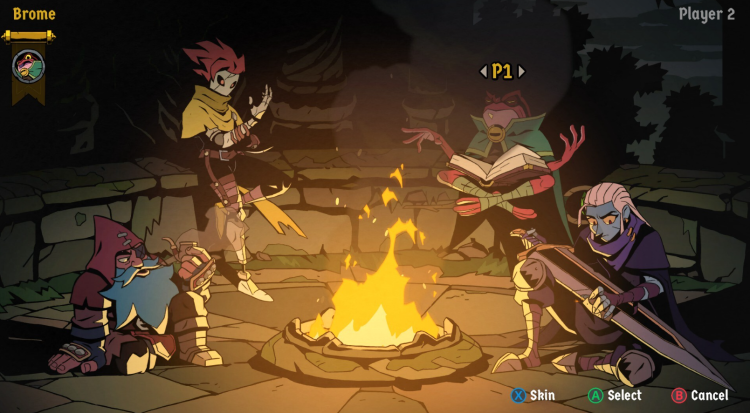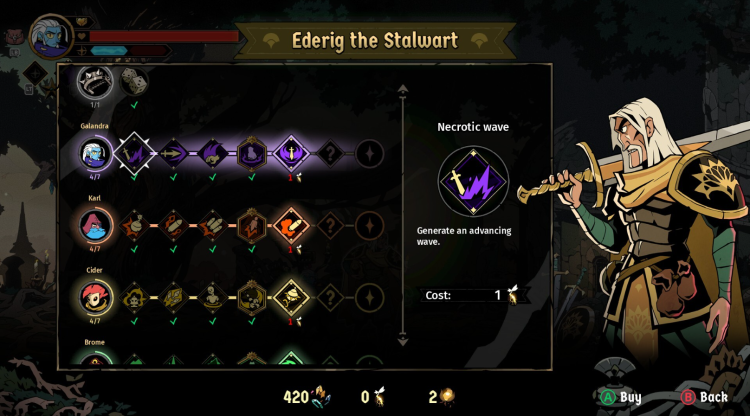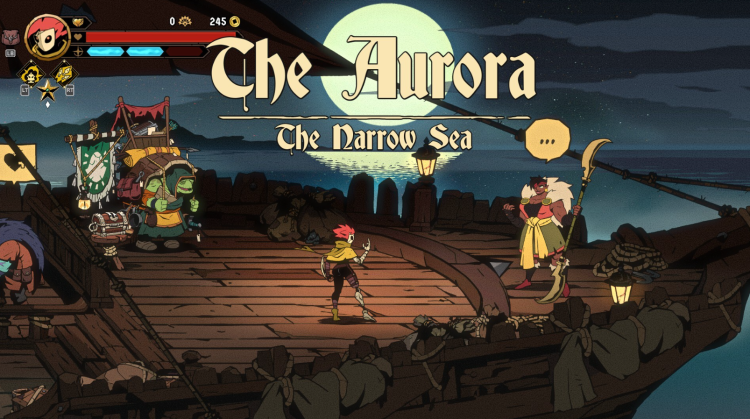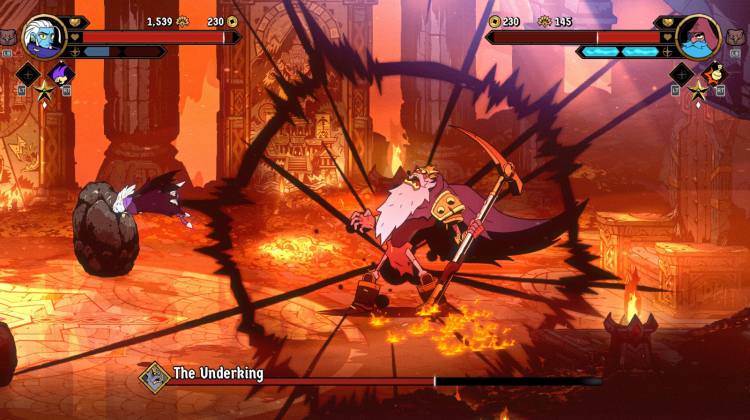Absolum Review: A Powerful Beat ‘Em Up Weighed Down by Its Roguelite Core
Released to much curiosity and discussion, Absolum blends two seemingly incompatible genres — the structured precision of a beat ‘em up and the randomness of a roguelite. Developed by the teams behind Streets of Rage 4, it promises the kinetic satisfaction of chaining combos and deflecting blows, while also asking players to die repeatedly to grow stronger.
Will Borger reviewed the game on IGN, describing it as “an excellent beat ‘em up let down by a roguelite structure that doesn’t serve it.” Absolum begins with the broken land of Talamh, torn apart by a magical cataclysm and ruled by Sun King Azra. In this world of shattered order, players assume the role of a rebel wielding forbidden magic to challenge the tyrant’s rule. The game’s structure revolves around dying, returning stronger, and continuing the rebellion under the guidance of Uchawi, the last of the Root Sisters. Each death leads to her intervention, ensuring players can return to fight another day.

Story and Setting
The story of Absolum unfolds through a mix of familiar fantasy tropes and flashes of unique lore. Dwarves dwell deep underground, elves have lost their mythical homeland, and power is seized by those who can fight their way to the top. While these elements establish a traditional backdrop, the early pacing slows momentum. The narrative opens with standard archetypes before later introducing twists that tie the repetitive structure to its central themes of persistence and rebellion.
Borger notes that the story “goes to some cool places eventually, but it takes a while to get there.” Much of the intrigue arrives after multiple runs, encouraging full completion to uncover the game’s deeper worldbuilding and character connections. This narrative model mirrors the looping frustration of roguelikes — each failed attempt brings progress, both in skill and in story comprehension.

Absolum Combat and Character Design
Where Absolum shines brightest is in its combat. It offers four playable characters — Karl, Galandra, Cider, and Brome — each equipped with unique attacks and playstyles. Karl, a dwarf with a gun, brings brute force; Galandra’s large sword commands reach and power; Cider, a mechanical thief, thrives on agility; and Brome, a frog-like spellcaster, channels ranged magic. Each fighter has standard combos, special moves tied to a meter, and a distinct Ultimate Attack.
The depth comes from how players chain these attacks into fluid combos, bouncing enemies across arenas and executing cinematic finishers. The influence of classic action games is clear, with nods to Devil May Cry, Ninja Gaiden, and even Hi-Fi Rush. Cider’s “Gyro Drop,” for example, mirrors Ryu Hayabusa’s iconic Izuna Drop, while Galandra’s swordplay feels lifted from Dante’s arsenal.
Defensive mechanics add further nuance. Players can dodge to evade attacks, but well-timed dodges and counterstrikes can deflect or clash with enemy blows, opening them for punishment. This combination of offense and defense rewards precision and timing over button mashing, making victories satisfying and skill-driven. Borger calls the combat “unimpeachable,” crediting its balance between flash and substance.

Roguelite Systems and Progression
Despite its satisfying combat, Absolum’s roguelite structure divides opinion. Players unlock new “rituals” that enhance attacks, dodges, or parries, and discover temporary “Inspirations” during runs. These upgrades are often key components of each character’s move set, but their temporary nature fragments gameplay. Galandra’s three-hit sword combo and Cider’s advanced mobility, for example, must be re-earned through runs, making early sessions feel incomplete.
This segmentation undermines the sense of mastery central to beat ‘em ups. Instead of learning and improving through repetition alone, players must grind for the right combination of upgrades. As Borger observed, “These are core parts of these characters’ identities and kits. They shouldn’t all be locked behind random upgrades.” Once players memorize the fixed map layout and the locations of key upgrades, runs become predictable, eroding the excitement of discovery.
Persistent progression adds another layer of friction. Absolum isn’t designed to be completed in one sitting. Instead, players accumulate currency through repeated deaths to unlock permanent boosts and open new routes. While this structure mirrors other roguelikes such as Hades, Absolum provides less narrative or mechanical variety between attempts. Early on, limited health pickups and small margins of error make survival dependent on incremental stat upgrades rather than pure skill.
This design decision blurs the identity of the game. Beat ‘em ups traditionally reward reflexes and consistency, while roguelites emphasize incremental power growth through failure. By merging the two, Absolum sometimes forces repetition that feels mechanical rather than meaningful. The static map layout compounds this issue, ensuring the same enemy encounters, chests, and arenas appear in each run.

Visuals, Music, and Presentation
Visually, Absolum is striking. Its environments mix the grittiness of ruined cities with the mysticism of enchanted landscapes. Character animations are detailed, with each attack carrying a sense of weight and flair. The game pays homage to 2D side-scrollers while incorporating modern lighting and particle effects that make every clash feel dynamic.
The soundtrack reinforces its high-energy tone. Composed to match the rhythm of combat, the music shifts from percussive battle themes to melancholic pieces between runs. Borger praised the presentation, noting that “Gorgeous artwork, an excellent soundtrack, and smart combat spread out among several distinct characters do a lot to carry it.”
Co-op play adds another layer of appeal, allowing players to coordinate attacks and share resources. However, the cooperative experience doesn’t offset the underlying repetition. As Borger described, his co-op partner “bowed out before it ever clicked,” highlighting how the game’s early grind can deter less patient players.

Endgame and Verdict
After roughly eight hours, progression and mastery begin to align. Upgrades accumulate, enemies fall faster, and the rhythm of combat becomes more natural. At this point, Absolum reveals its potential, combining responsive action with a fully developed roster of abilities. Yet reaching this point requires persistence through slow early pacing and repeated loops.
Borger’s final assessment captures the balance of strengths and frustrations in Absolum:
“Absolum is an excellent beat ‘em up let down by a roguelite structure that doesn’t serve it. I hate being limited by numbers instead of skill in action games, and in the early hours here, it feels like you’re a slave to them.” — Will Borger, IGN
Despite its repetitive elements, Absolum demonstrates strong artistic direction and mechanical ambition. Its combat is fluid, its style confident, and its presentation polished. The roguelite framework, however, imposes limitations that slow its pacing and dilute its sense of player agency. The tension between mastery and randomness defines the entire experience, making Absolum a compelling yet uneven entry in modern action design.
By blending the rhythmic satisfaction of a traditional beat ‘em up with the progression mechanics of roguelikes, Absolum aims high. The result is a visually stunning and mechanically rich game that occasionally trips over its own ambitions. While its structure demands patience, its combat rewards it, ensuring that for players willing to endure its repetition, the eventual triumph feels earned.
At around 20 hours to see its conclusion, Absolum stands as both a technical showcase and a case study in genre fusion — a testament to how bold experimentation can yield both brilliance and frustration in equal measure.

Comments